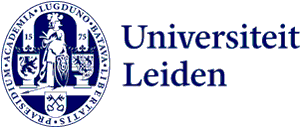
Bioart plays with genetic building blocks
Biotechnological developments are moving fast. From genetically modified plant varieties we are now moving to cultured meat. These developments require moral interpretation - and they get it in the form of art. Lotte Pet wrote a dissertation about it.
'Bioart deals with biotechnological developments and makes use of them itself,' Pet says. 'For example, the artworks are made of genetically modified organisms, which can serve as the building blocks for the work. Slovenian artist Maja Smrekar, for example, focuses her work on the relationship between humans, dogs and wolves. She used biotechnology to fuse one of her eggs with the fat cell of her own dog. Here biotechnology is used to make the hybridity between different species tangible.'
Werewolf
'A fictional example of such hybridity is the werewolf, a fusion of man and wolf. We know this one from myths and stories, but of course it doesn’t really exist. Smrekar's art changes the figure from something mythical, to something that exists in our reality. The pile of cells Smrekar has created is not necessarily viable - but has the potential to be. It is already a form of life.'
'Another of Smrekar's works was a piece of performance art in which she breastfed a young puppy herself, which generated a lot of reactions,' Pet says. 'Including the question of whether this was not animal cruelty, to take the puppy away from the bitch and then give human breast milk. This too contains those notions of hybridity, and the merging of species. So, questions are also raised through such forms of bioart that are also relevant outside the arts, in this case science.
Tinkering with genes
These and similar forms of bioart get a lot of reaction, Pet says. 'Developments like genetic modification can suggest that life can be reduced to a quantifiable genetic code. Science is already asking the necessary questions about this, but bioart ensures that these techniques also reach the viewer, who can then ask the question for themselves whether life is reducible to a genetic code or a piece of DNA.'
That, according to Pet, is also the power of bioart. 'By mixing biotechnological developments with art forms, the ethical questions involved are asked from a different perspective. Art is often ambiguous and vague; it actually creates a necessary confusion. In the same way, you can look at biological life and what exactly it entails. That is also not unambiguous, but rather fluid and changeable.'
